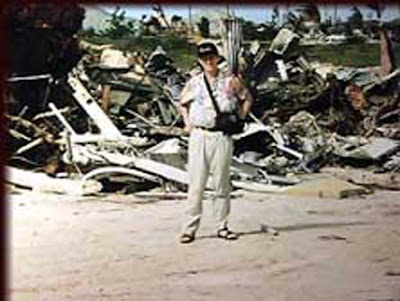In 1985, Poirier sold the Canadian Patent to his partner and immigrated to the US where he set up plants, first in New Mexico, then in Florida and Louisiana . He pushed research in several directions, adpating to desertic, then tropical and then cyclonic environments.
Soon it became know by developers of resorts that the Archimede houses could take it on the chin, having successfully gone through several big one unscathed.

In 1995, Poirier was himself in one ot these condos when Luis hit the island of Sint Maarten with unusual ferocity. Again no damage to the 40 condos in Guana Bay Beach where winds were clocked at 285 mph (+400 km/he). In his own words, Poirier got '
a postgraduate degree in hurricane resistance' just by spending the next two weeks scouting the island to analyse breakage of materials in a force 5 hurricane. This one had sat on the island for 12 hours, destroying to an amazing degree. After 15 days, planes could land and our director went into a more conventional architectural practice and to the University of Montreal as an invited teacher of architecture and part-time researcher. But the 'manufacturing bug' bit again in 1997!





